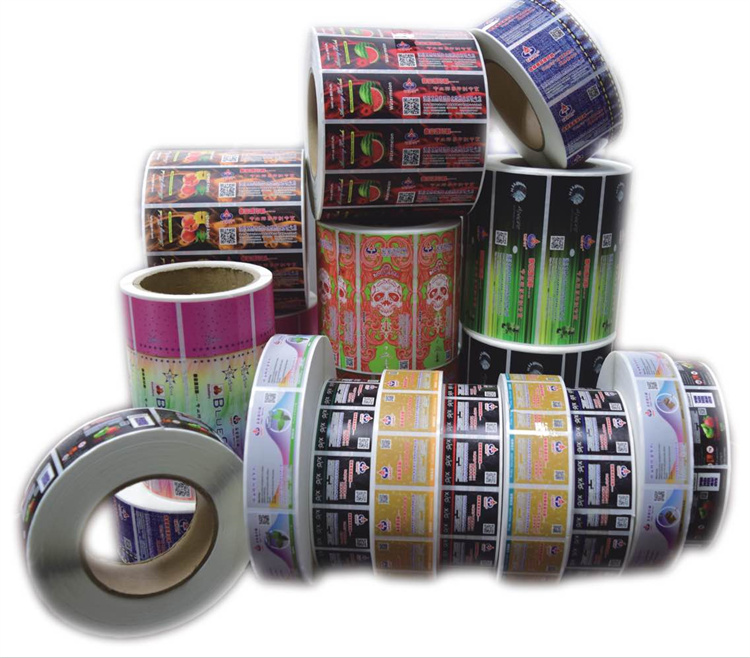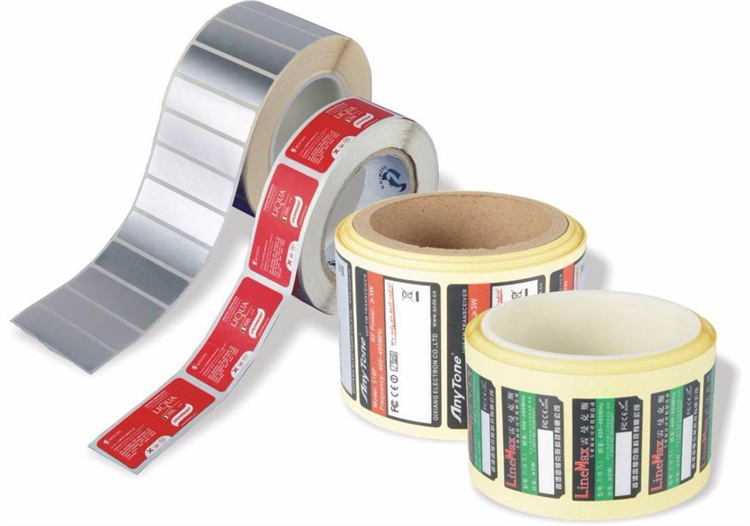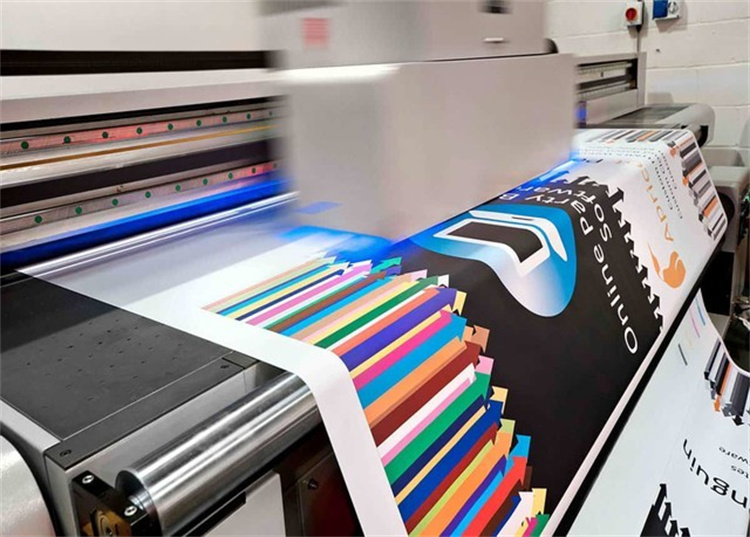As an indispensable business card in commodity circulation, labels have received widespread attention from all walks of life and commodity production enterprises. Self-adhesive labels, in-mold labels, heat shrink labels, anti-counterfeiting labels, digital labels, RFID electronic labels, etc. are innovative and widely used in the market. At the same time, with the growing call for sustainable development, low carbon, energy saving, emission reduction, environmental protection. Green printing have become one of the top priorities for the development of the current printing industry. Environmentally friendly labels have also become the mainstream of future printing label development.

Environmentally friendly materials for label printing
The need for environmental protection of labels has undoubtedly put forward higher requirements for label printing materials. For label printing materials, the original fiber paper and single film materials are gradually moving to synthetic paper, composite paper, and multi-layer modified film materials. In the transition, while adapting to the requirements of label function and quality. It also pays more attention to environmental protection. For label printing inks, they are also required to be non-toxic and non-volatile, easy to deink during recycling, and the ink products can be degraded.
1. Printing materials
Environmentally friendly synthetic paper
Synthetic paper does not contain the components of fiber paper, but has the writing and printing properties of fiber paper. It is a new type of three-layer composite material that uses PP as the base material, adds fillers and additives, and is formed by mechanical processing. Synthetic paper processing is to mix PP granules and filler materials, melt and extrusion into a film. It is first stretched longitudinally and then combined with the upper and lower surface layers. And then stretched transversely and cooled to obtain the product.
Synthetic paper is composed of 3 layers of films with different stretching effects. The middle layer has experienced stretching in two directions, vertical and horizontal, and has high tensile strength and rigidity. While the upper and lower layers of film are only stretched transversely, creating dense micropores. It becomes white and opaque due to the scattering of light. With the unevenness and whiteness characteristics of fiber paper. It has good writing and printing suitability.
Synthetic paper has the advantages of anti-penetration, anti-mildew, solvent resistance, high whiteness, and high-quality color reproduction. It is suitable for making in-film labels and can be recycled at the same time as packaging containers. It is smokeless and odorless when burned, and is a green and environmentally friendly packaging material.
Composite paper
Composite paper for labels is often a type of printing material that uses coated paper as the base material and sprays or adheres a layer of non-paper material on its surface. Among them, aluminized paper is a common type in label printing. Aluminized paper is coated with a layer of aluminum powder on coated paper, which is well combined with the paper. And then evenly coated with a layer of paint on the aluminum coating to improve the printability of the surface. Composite paper has strong tear resistance, gorgeous appearance, and is easy to recycle, making it suitable for wine labels.
Environmentally friendly membrane materials
PET and OPS are currently widely used in the production of heat shrink sleeve labels. Heat shrink sleeve labels are sleeve labels, which are film labels printed on plastic films or plastic tubes using special ink. This label can be recycled, which has significant advantages in cost saving and environmental protection. From daily life, we can also clearly feel that the market for heat shrink sleeves is constantly expanding, covering almost all retail industries.

2. Environmentally friendly ink
Ink is the key to reflecting the source, content, nature, function and other information of the goods in the label. The types of environmentally friendly inks for label printing are also under constant development and research.
UV ink
UV ink uses the radiation energy of the spectrum to dry the ink, has low VOC emissions and has little environmental pollution. The ink has high solid content and high color density. As long as it is not irradiated by UV light, the ink film is basically not dry. So there is no need to clean the ink path when the production task is completed, and the reasonable loss of ink is small.
UV inkjet printing, which combines the advantages of inkjet printing technology and ultraviolet curing technology. UV inkjet printing is a new technology developed at the end of the 20th century. It has many advantages such as being able to print on rigid and flexible materials, high production efficiency, high image resolution of printed products, good durability, and low price, making it a good application prospect.
Water-based ink
As a new type of packaging and printing material, water-based ink is mainly different from oil-soluble ink in the solvent. Printing with water-based ink does not need to be diluted with any organic solvent, only clean water can be used. So water-based ink does not have VOC emission problems. At present, water-based inks are not only widely used in label printing, but their status in the entire printing industry is constantly improving. Of course, it should also be noted that issues such as the long drying time of ink and limited color saturation need to be paid attention to.
Soybean environmentally friendly ink
Soybean environmentally friendly ink uses soybean oil to replace mineral oil in the ink. The soybean oil-based ink replaces ordinary petroleum-based ink, which can better avoid product pollution. Since soybean oil partially replaces the content of mineral oil, the oleic acid in vegetable oil will be relatively more than that of traditional ink. To a certain extent, the emulsification rate of the ink is increased, resulting in printing instability in actual printing situations. Therefore, in terms of resin selection, resins with good water resistance should be selected as much as possible to prevent excessive emulsification.
To make the information on the label durable, clear, and difficult to erase. It is necessary for the ink to fully match the label substrate, and for the ink to have good printability. In terms of realizing the environmental protection of labels, the actual use of the label should also be considered. And appropriate environmentally friendly inks should be selected according to the different substrates.
At the same time, the environmentally friendly ink used in PET shrink film is similar to PVC shrink film. But the surface adhesion of the white ink needs to be confirmed. This is because white ink has higher requirements on the surface adhesion of PET shrink film than PVC shrink film, and other colors are basically the same.
OPS shrink film is the most environmentally friendly film material so far. It should use environmentally friendly inks that are completely alcohol-soluble acrylic resins. The surface solvent resistance of OPS shrink film is much lower than that of PVC and PET shrink films. Thus, it is necessary to choose environmentally friendly ink specifically for OPS shrink film. More specific situations need to be gradually discovered and solved in actual production.
Environmental label printing process

Flexographic printing
Compared with letterpress printing, flexo printing uses environmentally friendly inks, achieving truly environmentally friendly printing. In the United States, flexo printing is the mainstream technology for label printing, and 80% of self-adhesive labels use flexo printing. In Europe, half of the self-adhesive label printing is flexo printing and letterpress printing. In China, embossed printing technology has been very mature in the label market and currently occupies a higher market share than flexo printing. However, flexo printing is developing very fast and has an absolute advantage in label printing. This is due to the continuous progress and improvement of its process technology, which is specifically reflected in the following aspects:
The direct plate making technology of flexo printing, especially the screen technology. It has made a breakthrough, which has greatly improved the printing quality of flexo printing. Especially in processing the gradient from delicate levels to absolute screen.
Compared with letterpress printing, flexo printing uses an anilox roller’s short ink path ink supply system. So flexo printing almost does not need to adjust the ink color during machine preparation. And there is no need to adjust the ink supply during formal printing. The change will produce color difference and cause scrap, which also has an advantage in yield.
Flexo printing is suitable for various combined printing methods. Among all printing methods, it is the most inclusive and scalable.
Flexo printing has advantages in dealing with short-run jobs.
At present, flexo printing has achieved a very high degree of standardization, and the operation is simple and convenient. The anilox roller ink transfer method also ensures a high degree of color consistency in different batches of printed products, which is unmatched by other printing methods. Although due to the plate material, the dots of flexo printing are not as fine as that of letterpress printing. From the overall printing quality, flexo printing still has advantages.
Digital printing
Because it saves the plate-making process, digital printing has also become an environmentally friendly label printing process. At the same time, it can realize on-demand printing, improve production efficiency, increase the anti-counterfeiting function of label printing, and meet personalized needs. At the same time, the printing width is basically unrestricted. Digital label printing can easily realize graphic printing and variable data printing to meet the ever-changing needs of the market, mainly in the following aspects:
Using digital production, production costs are reduced. Printing on demand will not cause waste. At the same time, it can take into account both long and short runs, expanding the business scope of the company. And the entire process can be completed by only one person, improving production efficiency.
Spot color printing, microtext printing, barcode printing, watermarking, etc. can be used to achieve product anti-counterfeiting functions.
Improve the accuracy of label printing and enable high-precision image printing with a resolution of 2400 dpi and 230 lines/inch.
The printing scope and service scope have been expanded. It can print on any material including leather, glass, wood, stone, etc., to meet the needs of different fields.
It has strong adaptability to the production environment. Its overall design process ensures that it can operate freely in various industrial production environments.
The increasingly strong demand for personalization in the market and the shortening of new product launch cycles have promoted the development of on-demand digital printing. According to survey statistics, 45% of label printers believe that on-demand printing will become a very important factor. 67% of label printers believe that short-run production capacity will be a very important survival factor. It is expected that within the next few years 40% of label production will be digitally printed.
Conclusion
The growing call for green environmental protection also puts forward requirements for widely used labels. Grasping the development direction of environmentally friendly label materials and printing processes. Developing environmentally friendly materials and printing methods will be a focus of attention for the china sticker printing industry that is more widely used today when we advocate green and environmentally friendly life.


